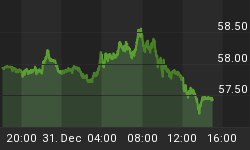Entering the week there noticeable headwinds for the euro. The single currency had suffered from a nasty sell-off the previous week, reaching fresh multi-month lows vs. the Japanese Yen, British Pound, US Dollar and Canadian Dollar. It also stood dangerously close to the all-time low vs. the Swiss Franc and near a multi-decade low vs. the Australian Dollar. Although, sentiment towards the euro was extremely bearish there were indeed tentative technical signs of a bottom.
Despite recent euro zone peripheral debt worries, the 2-year yield differential between the US and EU had continued to widen. Even while the euro depreciated markedly, the spread continued to work in Europe's favor. By Monday, the yield differential had expanded beyond 30 basis points for the first time in weeks, offering scope for the highly correlated EUR/USD to recover.
During the same stretch, the trade-weighted Euro Index (EXY) had begun to show tentative signs of forming a meaningful bottom as well. In fact, while price-action of the currency index was in the midst of collapsing, the corresponding daily RSI indicator had already begun to shift upwards. This positive divergence managed to correctly hint of the completion of a 5-wave decline that begun back in early November.
The most recent CFTC Commitment of Trader's report pointed out that speculators were roughly 24,000 contracts net short. Although, last week's tally is far from a record low, widening euro zone peripheral credit spreads had demonstrated that sentiment towards the single currency was near an extreme low. As the new week commenced, however, it was evident that the euro was at least due to consolidate recent losses.
Monday's price-action was considered to be optimistic, especially compared to the prior 3-day thrashing. The EUR/USD managed to form a small 2-day base that day, while the US Dollar Index falsely broke above the previous day's peak. The euro was also able to maintain recent support vs. the Swiss currency.
But by Tuesday, it still was still unclear whether the euro would manage to hold up ahead the important Portuguese debt auction. It wasn't until the neighboring British Pound began showing signs of breaking-out to the topside that very day. Despite looming headline risk in Europe, the GBP/USD managed to close above key trendline resistance. The cable, which often serves as a leading indicator for the euro, had now laid the groundwork for a meaningful rally.
Global equity markets decided to rally in advance of the heavily anticipated Portuguese debt auction. The vote of confidence was eventually justified by Wednesday's solid, but not spectacular results. Even the flood-ravaged Australian Dollar managed to find a bottom, rebounding off a key Fibonacci retracement.
After the news, however, the euro briefly slumped, but then manage to quickly recover. This allowed the EUR/CAD to form a 3-day double bottom. At this point, it was now evident that euro had formally found a base as the EUR/USD finished the day 200 pips higher.
The euro surged on Thursday, following better-than-expected Spanish and Italian debt auctions and a hawkish ECB. The single currency appreciated over 1% vs. a trade-weighted basket as short positions continued to be trimmed given renewed optimism in Europe. Euro fx future contracts have advanced on increasing volume, which is a strong indication of further strength.
Even the EUR/CHF, one the worst performing pairs of 2010 has confirmed a basing pattern. The most impressive measure, however, has been the US/EU 2-year yield spread. Thursday's 16-point advance (in favor of Europe) has now wiped out more than three-quarters of the move from late October. If this any indication of where the single currency is going, then fair value of the EUR/USD is around 1.39.

















